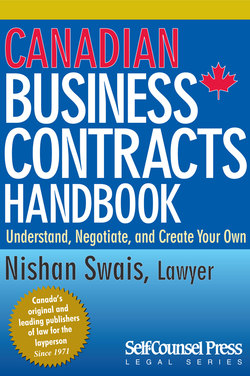Читать книгу Canadian Business Contracts Handbook - Nishan Swais - Страница 44
На сайте Литреса книга снята с продажи.
2.2 Attestation
ОглавлениеHow do we know that a party has agreed to legally bind itself to the terms of a contract? Otherwise put, how can we claim privity, either for ourselves or against another person?
The less reliable way is to point to the surrounding circumstances of the contract. If someone walks into your factory and buys a forklift, then the circumstances surrounding the sale of that forklift would tend to suggest that the contract is between your business and that individual.
Suppose the individual was buying the forklift on behalf of a business, Fifi Construction Co.? Who are the parties to the contract then? More to the point, who can you pursue if the installment payments for the forklift cease to be made? Privity says you can only enforce a contract against those who agree to be bound by it and, in this case, it is not clear whom or what that is.
To avoid that situation, parties to a contract often indicate their agreement to be bound by it, in writing, by means of what is called attestation.
Attestation by a party means that the party attesting is identifying itself as the party agreeing to be legally bound. One way to do so is to write the names of the parties at the bottom of the contract and have each of them sign the contract next to their name as evidence they are bound by the agreement. This is the typical contract referred to in common parlance and you now have another indication of why written contracts are preferable to any other kind. As you can see, they provide the best evidence regarding who has privity.
In Chapter 5, you will see that there are several ways to attest to a contract, each specific to the type of person being bound (person meant in the legal sense of individual or business entity).
